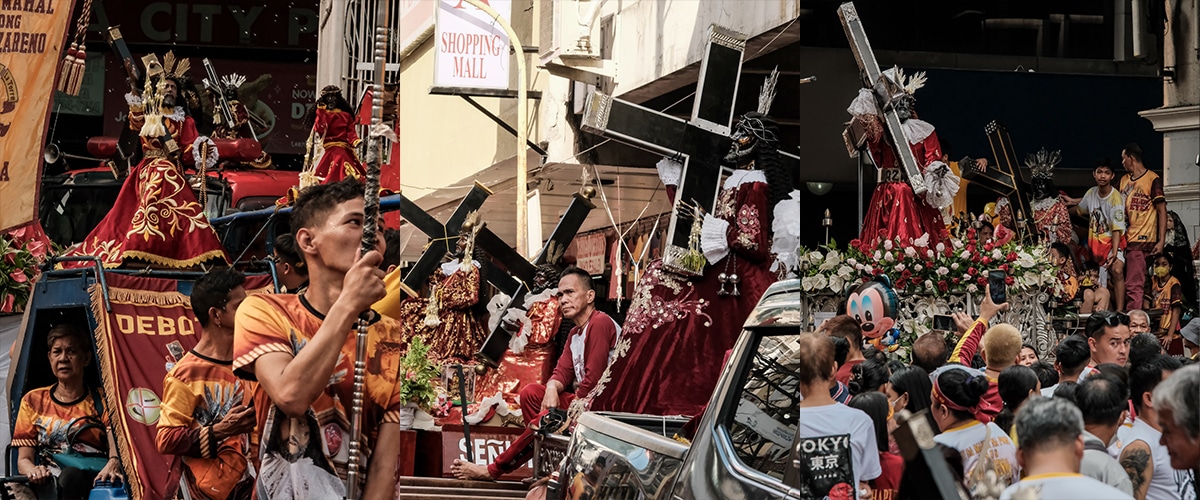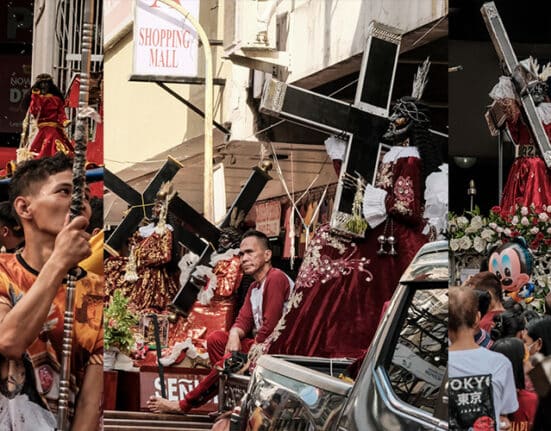THE BLACK Nazarene is one of the religious gatherings that millions of Filipinos anticipate. While the idea of Black Nazarene procession may be somewhat familiar, do you actually know how it started?
The observation of the Black Nazarene was first done in the year 1606, when a group of Augustinian Recollect missionaries traveled from Mexico to the newly colonized Manila. The expedition was said to be led by a friar from Extremadura, Spain, Fr. Benito de San Pablo.
Fr. Benito was known as an author of sermons and devotionaries. He later became the biographer of the Congregation of the Augustinian Recollect Sisters, which was formerly known as The Beaterio de San Sebastian de Calumpang founders Mother Dionisia Talangpaz and Cecilia Rosa Talangpaz.
Fr. Benito also wrote the book titled “Tratado de algunas cosas notables pertenecientes a los conventos de ministerios y administración espiritual de la Santa Provincia de San Nicolás de Tolentino de Agustinos Recoletos Descalzos de Filipinas” (“Treaty of Some Remarkable Things Belonging to the Convents of Ministries and Spiritual Administration of the Holy Province of San Nicolás de Tolentino of Agustinos Recoletos Descalzos de Filipinas”).
The book became part of Philippine history in the 17th century.
The missionaries sailed along with religious images from Mexico. They landed ashore in the Philippines on May 31. The images they brought consisted of Our Lady of Antipolo which is depicted in the Passion of Christ in several stages:
- Agony in the Garden (La Oracio del Señor)
- Christ Arrested (Señor Cautivo)
- Christ Scourged at the Pillar (Señor Azotado)
- Christ Fainted in Exhaustion (Señor Desmayado)
- Christ Crowned with Thorns (Señor de Paciencia)
- Christ Sentenced to Death (Ecce Homo)
- Christ Carrying the Cross (Señor Nazareno)
The Traslacion was said to be a solemn and quiet procession. In 1620, a group of strongly devoted men established the Cofradia de Jesus Nazareno which was the first confraternity dedicated to Jesus in the country.
Why does the Nazareno have a dark hue?
There are two theories about why the Nazareno image has a dark hue. The first theory believes that the image caught on fire on its way to Manila, causing its ivory to darken.
The second theory explains that the image was originally carved from very dark timber.
In an interview on GMA News, Loyola School of Theology’s Msgr. Sabino A. Vengco Jr. said the Nazareno was created through a wood called mesquite. The mesquite wood comes from a tree that is prevalent in Northern Mexico and the Southwestern United States.
Msgr. Vengco has also been to Mexico to study the wood. He later came up with the explanation that mesquite’s wooden core is black and is similar to the Philippine kamagong.
Religious images such as La Oracion del Señor, Señor Azotado, Señor de Paciencia, and the Nazareno were kept by the Recoletos. These images were brought out every Palm Sunday whenever the Passion of Christ was read. These were later destroyed in the war.
How it’s observed
Due to the COVID-19 pandemic, the traditional Traslacion was halted in the last three years. At the time, physical distancing was being implemented to reduce the risk of acquiring the communicable disease.
This year’s Traslacion is set to happen on January 9, 2024, and millions of devotees are expected to join the gathering.
One of the activities that The Feast of the Black Nazarene has is the procession that will start from the Quirino Grandstand to the Quiapo Church. The procession includes the 400-year-old black image of Jesus Christ being marched around.
Why is it being observed by Filipinos?
As sociologists try to dissect the reasons behind the deep devotions to the Nazareno, some have concluded that the Nazareno, an image of suffering, is something that the masses could relate to.
Meanwhile, others believe in the miraculous powers it holds as the historic image has survived fires, earthquakes and wars.
Aside from these beliefs, several people have reportedly been cured from their illnesses, passed exams, and/or received job offers, after honoring the Nazareno.









